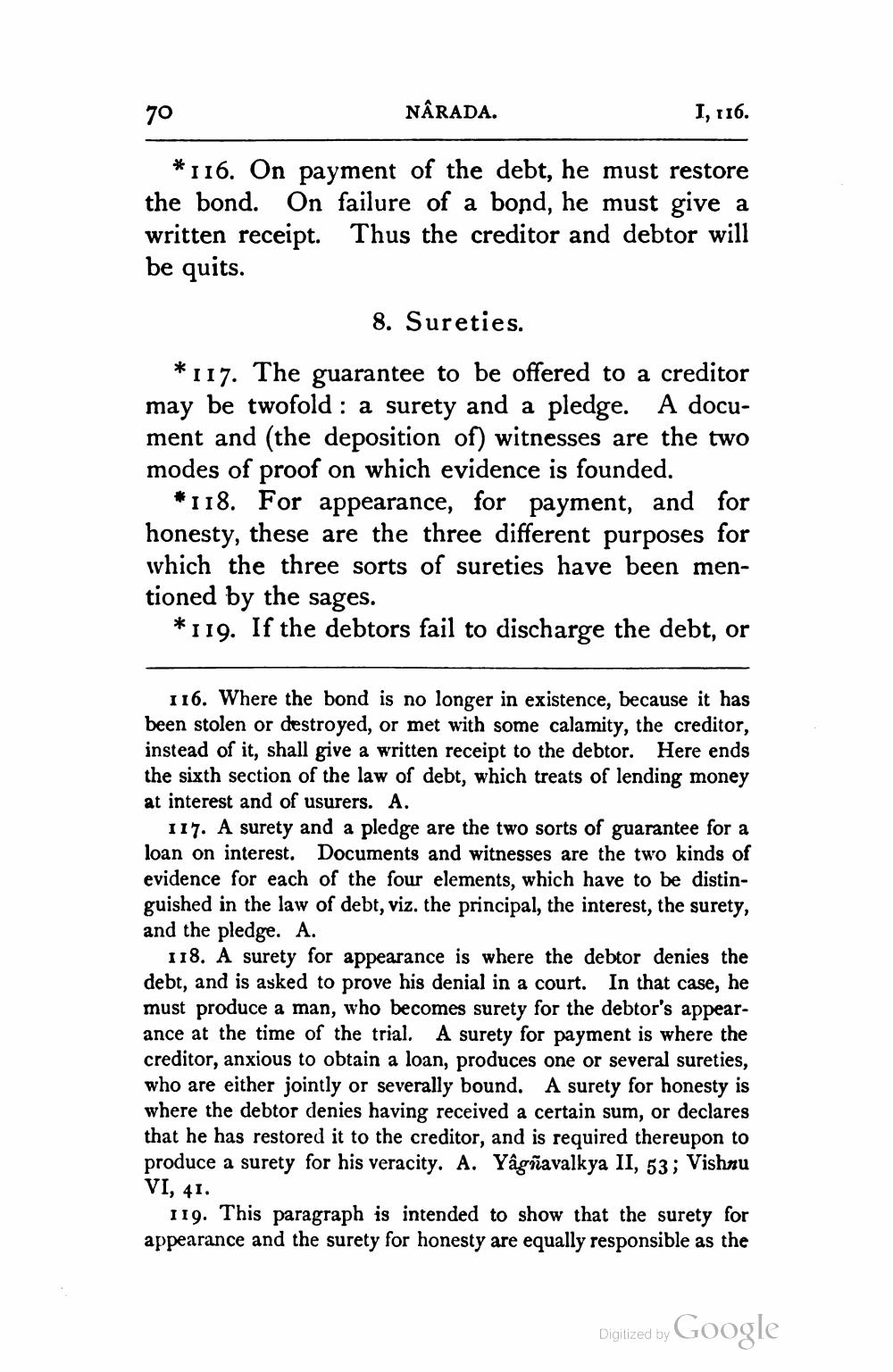________________
70
NÂRADA.
I, 116.
*116. On payment of the debt, he must restore the bond. On failure of a bond, he must give a written receipt. Thus the creditor and debtor will be quits.
8. Sureties. *117. The guarantee to be offered to a creditor may be twofold: a surety and a pledge. A document and (the deposition of) witnesses are the two modes of proof on which evidence is founded.
*118. For appearance, for payment, and for honesty, these are the three different purposes for which the three sorts of sureties have been mentioned by the sages.
*119. If the debtors fail to discharge the debt, or
116. Where the bond is no longer in existence, because it has been stolen or destroyed, or met with some calamity, the creditor, instead of it, shall give a written receipt to the debtor. Here ends the sixth section of the law of debt, which treats of lending money at interest and of usurers. A.
117. A surety and a pledge are the two sorts of guarantee for a loan on interest. Documents and witnesses are the two kinds of evidence for each of the four elements, which have to be distinguished in the law of debt, viz. the principal, the interest, the surety, and the pledge. A.
118. A surety for appearance is where the debtor denies the debt, and is asked to prove his denial in a court. In that case, he must produce a man, who becomes surety for the debtor's appearance at the time of the trial. A surety for payment is where the creditor, anxious to obtain a loan, produces one or several sureties, who are either jointly or severally bound. A surety for honesty is where the debtor denies having received a certain sum, or declares that he has restored it to the creditor, and is required thereupon to produce a surety for his veracity. A. Yagnavalkya II, 53 ; Vishnu VI, 41.
119. This paragraph is intended to show that the surety for appearance and the surety for honesty are equally responsible as the
Digitized by Google




